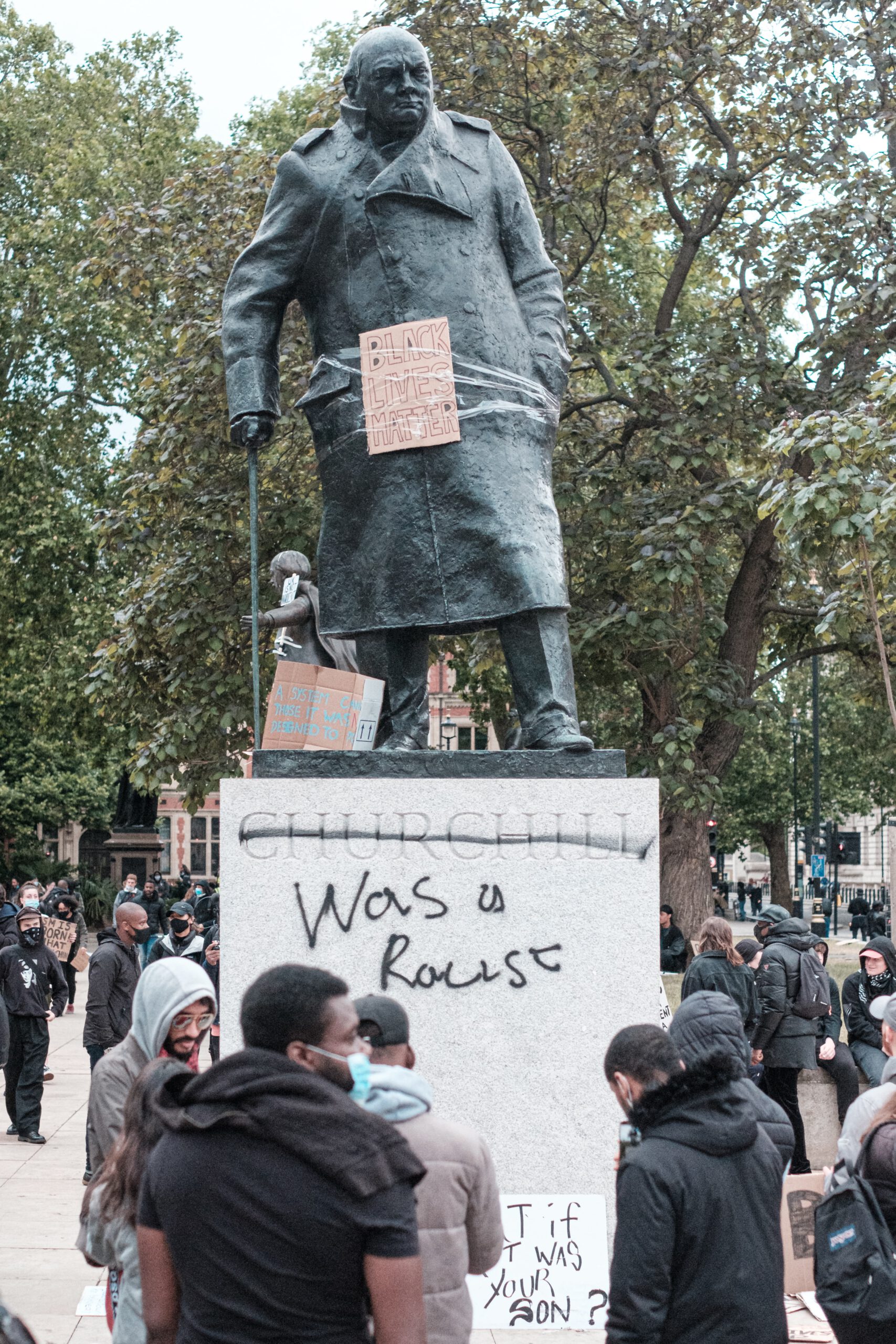There was a common practice in the ancient world of ‘damnatio memoriae,’ the eradication of a person from memory via the destruction of their icon. This was an expensive practice for marble statues, so such “damnation” might be expressed in other ways, such as the defacing of an inscription, or the reuse of marble slabs in promenades. Yes, a toppled statue could literally be trodden into the ground. The Romans also produced statue bodies with removable heads, so heads could be swapped out to keep pace with trends.
The Greco-Roman world was no stranger to a good old-fashioned statue toppling either. An orator named Favorinus had so pleased the people of Corinth that they erected a statue to him, putting him on a pedestal in the city’s library, as an example of the sort of oratorical skill and thoughtfulness they hoped their city might aspire to. In a speech Favorinus gave about this honour he said they placed his image “where you felt it would most effectively stimulate the youth to persevere in the same pursuits as myself.” But the ardor didn’t last. Indeed, this quote comes from Favorinus’ speech after he made the devastating discovery his statue was no longer standing.
Scenes of protestors tearing down or defacing statues have prompted worldwide conversations about what to do with problematic history. When the moral code of the present is applied to towering figures of the past, it becomes clear those figures have feet of clay.
History is an important teacher, and while erasing these figures might help us forget some sordid aspects of our racist past, their removal will not necessarily guarantee a better future. It will also remove, along with the clay feet, those good deeds that these figures performed. As the Russian author Aleksandr Solzhenitsyn puts it, the line between good and evil cuts through every human heart. Accordingly, one photo of a plaque to Winston Churchill, recently defaced with the word “racist,” was framed with the statement “wait till they hear about the other guy.”

Recent protests are rightly asking questions about whose images should be used to inspire today’s. What human from history (or even the present) is fit to serve as an inspiration for ‘the good’? Statues of sporting figures seem safe, yet our athletes moving from back page to front for bad behaviour reminds us that on-field prowess does not equate to being a moral exemplar. It seems better for companies to celebrate athletes in pixel and print, than in stone or bronze.
Part of the question about making a statue (or tearing one down) is a question of who should represent us. Who will be our ideal person? Who should we aspire to be? But another function of images is that they serve as objects in our ‘social imaginary.’ This is the term Charles Taylor uses to describe the background or archictecture that frames our beliefs, values, and understanding of virtue. It seems right to be careful about who we memorialise, and right to damn some icons and even tred them into the ground.
But another question we might ask is perhaps the danger of iconography to begin with. We feel angry when an icon or hero disappoints. That anger might be because these icons have become idols. In the ancient world the line between icon and idol was blurry. The same images of the imperial family found on street corners could also be found imperial temples dedicated to emperor worship. Perhaps these objects are actually occupying a ‘sacred’ space in a modern civic religion. We’ve pushed out the old gods, or God, and turned to people, or nation, to fill a place previously occupied by something transcendent. Perhaps what we’re seeing in the toppling of these statues is an act of desecration, a deliberate renunciation of previous forms of worship. But what images are worthy of taking their place?
The choice about what to immortalise in bronze or stone is an important one — and in the moral vision of the Bible, we’re better off not making that choice at all.
Maybe here there is some wisdom in those ancient Hebrew words known as the ‘Ten Commandments’. Commandment number two is a prohibition against making and worshipping ‘graven images.’ Part of the prohibition of icons and idols is that people — typically ancient rulers — will never properly represent the goodness of God or a truly good pattern of humanity. To worship a human person, is to aspire to becoming like them. You become what you worship. The choice about what to immortalise in bronze or stone is an important one — and in the moral vision of the Bible, we’re better off not making that choice at all.
According to the biblical story, humans are always ‘dust’ infused with divine breath; with feet of clay, and hearts capable of leading us to both goodness and evil. That perspective enables both a celebration of human goodness and capacity, but also a chastened knowledge of how far such people often fall short.
Nathan Campbell is a Presbyterian pastor in inner-city Brisbane and an Associate of the Centre for Public Christianity.